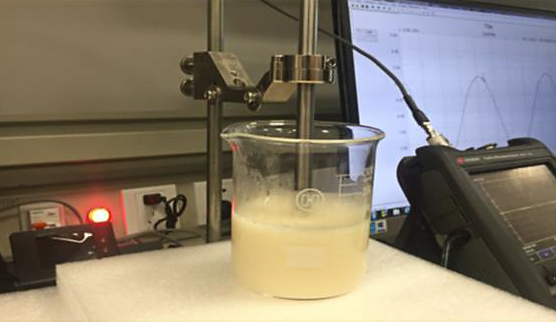
A New Method for Early Breast Cancer Detection: Handheld RF Analyzers
Breast cancer, the most common cancer in women worldwide, is a disease that hits close to home for most. One doesn’t have to look hard to see its effects in communities around the globe. From 2008 to 2018, breast cancer incidence rates increased by more than 20% worldwide and mortality rates increased by 14%. While incidence rates are highest in developed regions, mortality is highest in less-developed countries that lack early detection and access to treatment. As the American Institute for Cancer Research states, “With this growing global burden, prevention of cancer is one of the most significant public health challenges of the 21st century.”
Recently, researchers tried out a new method for cancer detection involving handheld RF analyzers. The method involves measuring the difference between the dielectric constants of normal breast tissue and cancerous tissue. Figure 1 shows the test setup.

In simple terms, the dielectric constant of a material is a complex number that represents the response of a dielectric material to an electric field. The larger that number is, the stronger the material couples with an RF pulse. Researchers testing cancerous tissues at different frequencies found that cancerous tissues consistently produce higher dielectric constant values than normal tissue. Figure 2 shows the dielectric curves of both tissues.

Having access to a portable network analyzer that performs S-parameter measurements of the dielectric constants of different materials is beneficial for many stakeholders. Students gain a better understanding of S-parameter RF measurements while also performing materials testing. Researchers make use of a single, portable device that performs multiple measurements instead of purchasing several different types of bench-top equipment for varying lab tests. And in the end, the usage of handheld RF analyzers to develop an innovative methodology for the identification of breast cancer could improve diagnosis and treatment times in the future, potentially earlier than traditional methods.
The lightweight and flexible design of a handheld analyzer, such as Keysight’s FieldFox, makes it convenient and easy to operate in practical research applications. In addition to enabling the teaching of materials testing in groups, a handheld analyzer like FieldFox, paired with Keysight’s N1500A materials measurement software, verifies the feasibility of dielectric constant imaging. FieldFox handheld analyzers are not only accurate and reliable, but their flexibility allows users to configure them as a cable and antenna analyzer, a vector network analyzer, a spectrum analyzer, or a combination analyzer.
Find out more about RF analyzer use in cancer detection research and other medical research applications in the white paper “Innovative Use Cases for Handheld Analyzers in the Medical Field.”
The innovative application discussed in this blog is research-based. FieldFox is not intended to be used for any medical application, including in-vitro diagnostics.